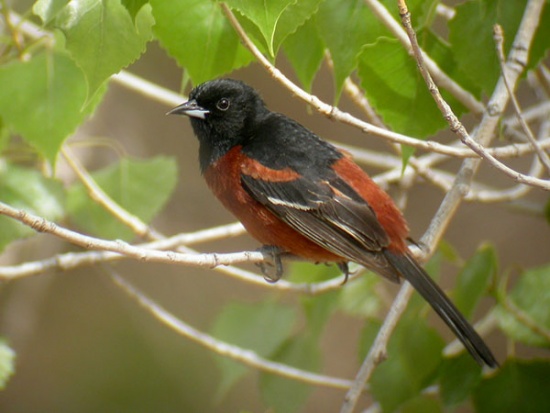- Icterus spurius
Includes: Ochre Oriole
Identification
9-10 in. Chestnut underneath, black head, back, tail, and wings, thin straight bill. Females and immatures are olive-green above with two white wing-bars and yellowish underparts; immature males have a dark throat.
Distribution
Eastern United States from eastern Montana and eastern New Mexico east and north to southern Michigan, central New York, and Massachusetts south into central Mexico; absent from southern Florida. Recent results suggest that at least part of the US population after having bred in early parts of summer migrates to north-western Mexico where a second round of breeding takes place.
Winters in Central America south to Colombia and Venezuela. Rare to casual vagrant in western United States.
Taxonomy
Two subspecies accepted:
- I. s. spurius breeds from southeast Canada to Mexico, winters to Colombia and Venezuela
- I. s. fuertesi on the Caribbean coast of Mexico
fuertesi is sometimes split as full species, Ochre Oriole or Fuerte's Oriole.
Habitat
Trees along streams, rivers and lakes, and on farms and parklands.
Behaviour
The diet includes insects, berries and nectar; also flower parts.
They build a deep, hanging cup nest, although woven of grass fibres, hidden within dense foliage, often in a dense cluster of trees. The young leave the nest 11 to 14 days after hatching.
References
- Clements, James F. 2007. The Clements Checklist of Birds of the World. 6th ed., with updates to October 2007. Ithaca: Cornell University Press. ISBN 9780801445019
- Paper describing migration to second breeding area
Recommended Citation
- BirdForum Opus contributors. (2024) Orchard Oriole. In: BirdForum, the forum for wild birds and birding. Retrieved 16 April 2024 from https://www.birdforum.net/opus/Orchard_Oriole




